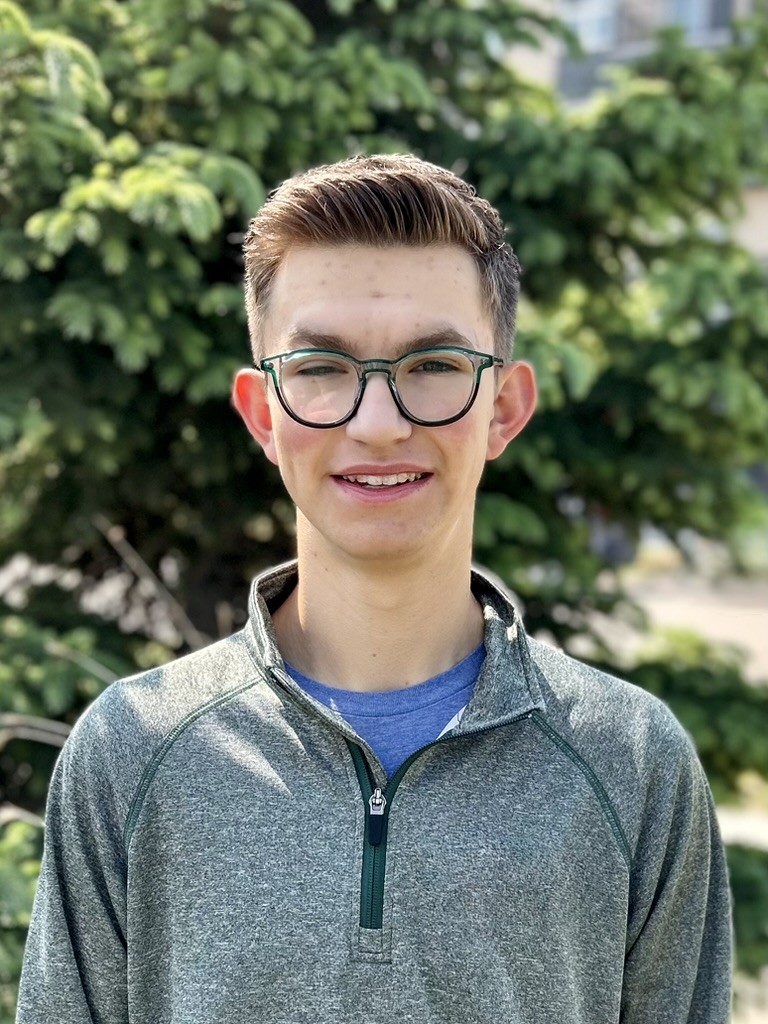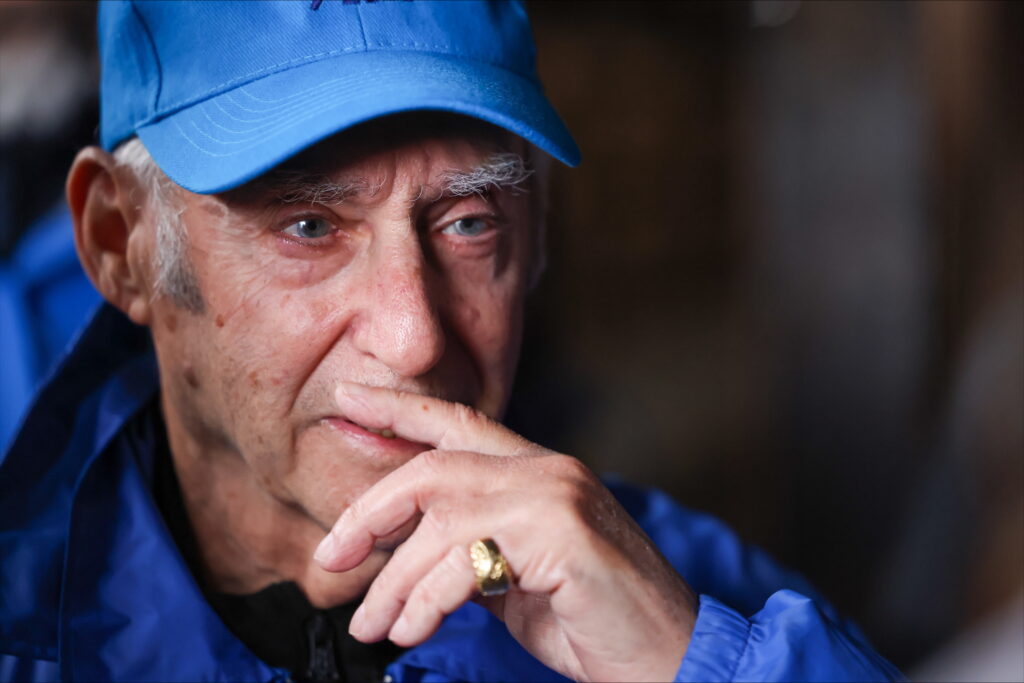Local News
Congregation Shir Tikvah officially dissolves
 By BERNIE BELLAN In our July 24, 2019 issue we broke the news that Congregation Shir Tikvah was ceasing operations. In that issue we reported that “A Winnipeg congregation that had been holding High Holy Day services for the past 16 years is ceasing operations. In that article we wrote that, in a letter sent to congregation members dated July 12, Congregation Shir Tikvah President Sharon Bronstone stated:
By BERNIE BELLAN In our July 24, 2019 issue we broke the news that Congregation Shir Tikvah was ceasing operations. In that issue we reported that “A Winnipeg congregation that had been holding High Holy Day services for the past 16 years is ceasing operations. In that article we wrote that, in a letter sent to congregation members dated July 12, Congregation Shir Tikvah President Sharon Bronstone stated:
Dear Members of Congregation Shir Tikvah,
On behalf of the Board of Directors and myself, it is with great sadness that we inform you of our decision not to hold High Holy Days Services this coming year.
After sixteen years in operation we can only see the writing on the wall that our numbers have been declining and at this time we don’t see a viable option to move forward.
When we started out no one thought our “little congregation” would ever amount to anything nor did anyone think Shir Tikvah would become a household name to hold Rosh Hashanah and Yom Kippur services for sixteen years.
While closing our doors is not what we had in mind, we do want you to know how important your presence, contributions and commitment has been to all of us. To be a part of an amazing group of people devoted to helping us thrive over the years has been incredibly heartwarming to everyone who has served on the Congregation Shir Tikvah Board as well as those behind the scenes. We applaud you for sticking by us!
As a follow-up to that story we were recently contacted by Sharon Bronstone to inform us that Congregation Shir Tikvah is now officially dissolved.
Among the several artifacts that the congregation had accumulated over the years were two Torah scrolls which had been donated to the congregation by Leonard Kahane in 2015. In a story I wrote that year I gave the explanation as to how those two Torah scrolls had ended up with Shir Tikvah. That story also told how the congregation had first come about:
It’s not often that a Jewish congregation in Winnipeg is able to commemorate something as momentous as the acquisition of a new Torah scroll. If memory serves correct, the last time any congregation here was able to mark such an occasion was in May 2012, when Temple Shalom celebrated the completion of the “Penn Torah scroll”, which was the crowning achievement of scribe Irma Penn shortly before her passing that same year.
Now, a congregation about whom we don’t hear very much is also about to unveil two new recently-acquired Torah scrolls. Congregation Shir Tikvah, which is in its 13th year, will be unveiling the two Torahs at its Rosh Hashanah service on Monday, September 15.
The Torah scrolls are the gifts of Dr. Leonard Kahane, in memory of his late wife, Hope Renee, who passed away in 2006.
Recently I sat down with three individuals who were instrumental in creating Shir Tikvah congregation and who have played vital roles in keeping that congregation alive every high holiday since 2003: Sid Ritter (the former executive director of Bnay Abraham Synagogue prior to the merger of that synagogue with the Beth Israel and Rosh Pina synagogues in 2002), his wife Hinda , and Sharon Bronstone (a past president of the Beth Israel congregation).
As much as I was interested in hearing the story of the Torah scrolls, I was even more interested in knowing what has led the various individuals who have gathered together each year at the Viscount Gort Hotel (save for two years at the old Blue and Gold room in the former Winnipeg Stadium) for high holiday services to stay together.
The story, for those not familiar with it, is that at the time that three north-end Winnipeg congregations – the Beth Israel, Bnay Abraham, and Rosh Pina, decided to merge into one in 2002, not all members of those congregations were enthused with the idea of the merger. According to Bronstone, “Some of us were not happy the way it (the merger) turned out…and Sid, David (Bloomfield, also one of the original movers behind the creation of Shir Tikvah and a past president of the Beth Israel), and I started getting phone calls from others, asking ‘What are you going to do?’ “
“Nobody really wanted to start anything,” says Bronstone, “but the phone calls kept coming in and we did start something – it was a one-shot deal, in 2003” (high holidays services in the basement of the Viscount Gort Hotel on Portage Avenue).
“The first year we had 83 people – which surprised us,” she notes. “It came around that we met a second year, also at the Viscount Gort.” Since then the number of people attending Shir Tikvah’s services has continued to grow, to the point where there are anywhere from 150-180 individuals now attending annually (although one year there were over 200 people in attendance, Bronstone notes.)
(Ed. note: In my conversation with Sharon Bronstone on March 10, 2021 Sharon offered the following observations about the original formation of Congregation Shir Tikvah:
“Some of us were younger people who weren’t comfortable going to a larger synagogue.
Rabbi Green (who was the rabbi at Congregation Beth Israel at one time) had suggested, when Shir Tikvah was first formed that (to paraphrase) “You’re doing something for people who do not want to belong to a synagogue, but wanted somewhere to go for High Holiday services.”)
Arky Berkal has served as cantor from day one, while Sharon’s son Adam has served as “lay rabbi”, also from the very beginning. (Every year Adam Bronstone has come back to Winnipeg for two weeks during the high holidays, no matter where he may have been living anywhere in the world.) In recent years, Jared Trotman has also been contributing as “Ba’al Shacharit”, this year to be joined on the bimah by Avrom Charach.
As far as Torah scrolls have gone though, the congregation had been in the practice of borrowing two scrolls belonging to the Gray Academy each year. Later, when those Torahs were sent for refurbishing, Shir Tikvah was able to borrow two more Torah scrolls from the Talmud Torah-Beth Jacob congregation on Main Street. Most recently it had been borrowing two Torahs from the Shaarey Zedek Synagogue.
Bronstone notes that, even though there “were 48 Torahs” in the Etz Chayim as a result of the merger of the three congregations and that the Simkin Centre also had a surplus of Torahs, “no one wanted to give any to us.”
But, last year, explains Bronstone, while they “were breaking fast, Dr. (Leonard) Kahane said to me ‘Is there anything I can do for you?’ I didn’t understand what he meant, so I said ‘I don’t think so.’”
“No, no, what I meant is ‘What are you short?’ “, Dr. Kahane continued, according to Bronstone. “Well, after Yom Tov, I called him,” she continues, and mentioned that they were short Torahs of their own, so “he made us a fantastic offer of two Torahs”.
At that point Hinda Ritter explains how Sid and Leonard Kahane went down to Florida to visit a store known as “Tradition”, whose owner specialized in the sale of Torahs “that have been reclaimed from the Holocaust”.
“The Torahs go to Israel,” Hinda adds, “where they’re vetted and fixed, and he (the owner of Tradition) gets them.” (The Torahs are kept near the Kotel, where authorized scribes are allowed to work on them, Sid Ritter explains later in the conversation.)
Sid Ritter adds: “There are two locations in the world where Holocaust Torahs are kept. One is in Jerusalem and the other location is London, England. My opinion is we ought to be getting Torahs from Jerusalem. Those Torahs are checked by an authorized scribe to make sure they are all kosher.”
(At this point I interjected, asking whether it was permissible to repair a Torah that had been severely damaged. According to Sid Ritter, it depends on the degree of damage.)
“I asked our contact in Florida whether it would be possible to obtain one Torah that came from Poland and one from Romania,” Sid continues, “because our donor’s family came from Romania.”
“After some back and forth, eventually two Torahs were found – one from Poland, and one from Romania – and that’s what we ended up with,” he says.
There was an added element to the purchase of the Torahs that entered into the equation, Sid adds: The weight of the Torahs. Theirs is an “egalitarian congregation”, he explains, and they didn’t want to acquire Torahs that would be too heavy for women to carry.
So, what are the components that go into adding to the weight of a particular Torah? Sid wondered. One obvious factor would be the weight of the scroller, or the “Etz Chayim,” as it is referred to. “It depends on whether it’s made of hardwood or softwood,” Sid explains. But, another added element is the type of ink used in creating a particular Torah. “The heavier the ink, the more massive the Torah – not so much the parchments – they’re largely the same,” he adds.
But, how do you know a Torah comes from Poland, for instance, while another comes from Romania? “It turns out that there are actually distinct styles,” Sid says, that can indicate where a Torah comes from.
I ask: “How much does a Torah go for anyway?”
Both Sharon and Sid chime in: “Lots!”
In addition to the actual scrolls, Dr. Kahane also paid for the Torah covers, which were made in Israel.
Since Congregation Shir Tikvah meets only for high holiday services, I ask where the Torahs will be kept during the rest of the year. It turns out that Sid Ritter will keep them in his own home – under conditions “that are reasonably temperature controlled”, he notes.
The ark and the podium used by Shir Tikvah were designed and built by Zvi Gitter, Sharon Bronstone says, and they’re meant to be easily disassembled. As a matter of fact, she notes, “ we have given them out when people have bar or bat mitzvahs in hotels.”
“We are, in my estimation, a real synagogue,” she adds, “because the only things we were lacking were our own Torahs”.
According to Sharon Bronstone, now that Shir Tikvah Congregation is officially dissolved, the two Torah scrolls that the congregation acquired in 2015 are to be given to the Chevra Mishnayes Congregation (about which we have a story on page 34.)
As well, Sharon adds, the ark and the podium mentioned in that 2015 story will be donated to Congregation Temple Shalom, along with the white gowns worked by the lay rabbi and cantor.
As far as the High Holiday books that had been accumulated by Shir Tikvah over the years, Sharon says, of the 160 books in the congregation’s possession, 60 have been able to find new homes in other congregations, but there are still 100 remaining to be donated. If anyone is interested in acquiring these books they are asked to contact Sharon at 204-338-5064.
Local News
Further to the Simkin Centre’s financial situation

By BERNIE BELLAN A while back I published an article about the deficit situation at the Simkin Centre. (You can read it at “Simkin Centre deficit situation.“) I was prompted to write that particular article after reading a piece written by Free Press Faith writer John Longhurst in the August 5 issue of the Free Press about the dire situation personal care homes in Winnipeg are in when it comes to trying to provide their residents with decent food.
Yet, Longhurst made one very serious mistake in his article when he wrote that the “provincial government, through the Winnipeg Regional Health Authority, has not increased the amount of funding it provides for care-home residents in Manitoba since 2009.”
In fact, the WRHA has given annual increases to personal care homes, but its allocations are not broken down by categories, such as food or salaries. As a spokesperson for the WRHA explained to me in an email: “PCHs receive per diem global operating funding based on the number of licensed beds they operate. This funding model is designed to support the full range of operating costs associated with resident care, including staffing, food services, utilities, building operations, and other day-to-day expenses.”
Now, one can make a perfectly valid argument that the level of funding from the WRHA has not kept up with inflation, especially inflation in food costs, but the Simkin Centre is in an even more precarious position because of the skyrocketing cost of kosher food.
“In recent years,” according to an article on the internet, “the cost of kosher food has increased significantly, often outpacing general food inflation due to unique supply chain pressures and specialized production requirements.”
Yet, when I asked Laurie Cerqueti how much maintaining a kosher facility has cost the Simkin Centre, as I noted in my previous article about the deficit situation at Simkin, she responded: “approximately $300,000 of our deficit was due to food services. I do not have a specific number as far as how much of the deficit is a result of kosher food…So really this is not a kosher food issue as much is it is an inflation and funding issue.”
One reader, however, after having read my article about the deficit situation at Simkin, had this to say: “In John Longhurst’s article on Aug 5, 2025 in the Free Press, Laurie (Cerqueti) was quoted as saying that the annual kosher meal costs at Simkin were $6070 per resident. At Bethania nursing home in 2023, the non-kosher meal costs in 2023 were quoted as $4056 per resident per year. Even allowing for a 15% increase for inflation over 2 years, the non-kosher food costs there would be $4664.40 or 24% lower than Simkin’s annual current kosher food costs. If Simkin served non-kosher food to 150 of its 200 residents and kosher food to half of its Jewish residents who wish to keep kosher, by my calculation it would save approximately $200,000/year. If all of Simkin’s Jewish residents wished to keep kosher, the annual savings would be slightly less at $141,000.”
But – let’s be honest: Even though many Jewish nursing homes in the US have adopted exactly that model of food service – where kosher food is available to those residents who would want it, otherwise the food served would be nonkosher, it appears that keeping Simkin kosher – even though 45% of its residents aren’t even Jewish – is a “sacred cow” (pun intended.)
So, if Simkin must remain kosher – even though maintaining it as a kosher facility is only adding to its accumulated deficit situation – which currently stands at $779,426 as of March 31, 2025,I wondered whether there were some other ways Simkin could address its deficit while still remaining kosher.
In response to my asking her how Simkin proposes to deal with its deficit situation, Laurie Cerqueti wrote: “There are other homes in worse financial position than us. There are 2 homes I am aware of that are in the process of handing over the keys to the WRHA as they are no longer financially sustainable.”
I wondered though, whether the Simkin Centre Foundation, which is managed by the Jewish Foundation of Manitoba might not be able to help the Simkin Centre reduce its deficit. According to the Jewish Foundation’s 2024 annual report, The Saul and Claribel Simkin Centre Foundation, which is managed by the Jewish Foundation, had a total value of $11,017,635.
The Jewish Foundation did distribute $565,078 to the Simkin Centre in 2024, but even so, I wondered whether it might be able to distribute more.
According to John Diamond, CEO of the Jewish Foundation, however, the bylaws of the Foundation dictate that no more than 5% of the value of a particular fund be distributed in any one year. There is one distinguishing characteristic about the Saul and Claribel Simkin Centre Foundation, in that a portion of their fund is “encroachable.” The encroachable capital is not owned by JFM. It is held in trust by JFM but is beneficially owned by Simkin, similar to a “bank deposit”. While held by the JFM, these funds are included in the calculation of Simkin’s annual distribution.
I asked John Diamond whether any consideration had been given to increasing the distribution that the Jewish Foundation could make to the Simkin Centre above the 5% limit that would normally apply to a particular fund under the Foundation’s management.
Here is what John wrote in response: “The Simkin does have an encroachable fund. That means that at their request, they can encroach on the capital of that fund only (with restrictions). This encroachment is not an increased distribution; rather, it represents a return of capital that also negatively affects the endowment’s future distributions.
”It is strongly recommended that encroachable funds not be used for operating expenses. If you encroach and spend the capital, the organization will receive fewer distribution dollars in the next year and every year as the capital base erodes. Therefore, the intent of encroachable funds is for capital projects, not recurring expenses.”
I asked Laurie Cerqueti whether there might be some consideration given to asking for an “encroachment” into the capital within the Saul and Claribel Simkin Centre Foundation?
She responded: “We are not in a position where we are needing to dip into the encroachable part of our endowment fund. Both of our Boards (the Simkin Centre board and the Saul and Claribel Simkin Centre Foundation board) are aware of our financial situation and we are all working together to move forward in a sustainable way.”
At the same time though, I wondered where donations to the Simkin Centre end up? Do they all end up in the Simkin Centre Foundation, for instance, I asked Laurie Cerqueti on December 15.
Her response back then was: “All donations go through our Foundation.”
I was somewhat surprised to read that answer, so I asked a follow-up question for clarification: “Do all donations made to the Simkin Centre end up in the Simkin Centre Foundation at the Jewish Foundation?”
The response this time was: “No they do not.”
So, I asked: “So, how do you decide which donations end up at the Foundation? Is there a formula?”
Laurie’s response was: “We have a mechanism in place for this and it is an internal matter.”
Finally, I asked how then, the Simkin Centre was financing its accumulated deficit? Was it through a “line of credit with a bank?” I wondered.
To date, I have yet to receive a response to that question. I admit that I am puzzled that a personal care home which has a sizeable foundation supporting it would not want to dip into the capital of that foundation when it is facing a financial predicament. Yes, I can see wanting the value of the foundation to grow – but that’s for the future. I don’t know whether I’d call a $779,425 deficit a crisis; that’s for others to determine, but it seems pretty serious to me.
One area that I didn’t even touch upon in this article, though – and it’s something I’ve written about time and time again, is the quality of the food at the Simkin Centre.
To end this, I’ll refer to a quote Laurie Cerqueti gave to John Longhurst when he wrote his article about the problems personal care homes in Winnipeg are facing: “When it comes to her food budget, ‘we can’t keep making the same number of bricks with less straw.’ “
Local News
Exclusive: Security Enhancement Fund to be announced by Province in coming days

By NOAH STRAUSS The province is set to announce a new program called the Security Enhancement Fund, which
will provide funding to religious and faith groups to improve security at institutions such as
synagogues and mosques. In an exclusive interview, Minister of Justice Matt Wiebe outlined the
plan and detailed what the province has already done to help protect Jewish Manitobans.
“What we want to do is to be able to provide the community with the kind of tools that they need
to stay safe and to ensure that everyone in the community feels safe,” said Wiebe.
The fund will provide a missing link between government and religious communities, and
communities will now be able to make their own choices without money being a big restraint.
Essentially, the power will be in the hands of community leaders and not government officials.
The minister noted that the new partnerships will provide the province a better understanding of
the needs of every community. Rather than the province making the choices, they are
essentially giving a voice to each community. The grants, totalling $1 million, will provide funds to enhance security at facilities like synagogues.
The Jewish Post reached out to Dr. Rena Secter Elbaze, executive director of Congregation
Shaarey Zedek. “It’s important that the government show us that they’re taking security seriously and stepping up to the plate to make this offer. We will absolutely be applying for grant money,” she said. Elbaze also wants to know whether or not the government will cover the costs of things the synagogue has already spent money on. She noted that the province has, in the past, made grants available to have security guards present.
When speaking about what the Justice Ministry has already done to protect Jewish Manitobans,
Wiebe brought up the new special prosecutor that is focusing on hate crimes. Wiebe said the
special prosecutor works closely with the Winnipeg Police Service “to support investigations and
prosecute hate crimes. Wiebe also went on to say how the Department of Education has been helping to fight antisemitism. “The creation of the Holocaust education curriculum is an important step in the right direction,” he said. When asked about Oliver Didtger Ederhof, the individual charged with 14 counts of mischief including vandalism of Shaarey Zedek, Wiebe said decisions like bail and police undertakings are decisions that are in part made by the federal government through the criminal code and policies. “We’re going to continue to advocate for stricter bail reform at the federal level…. I’ve been very clear, we issued clarified directives around bail to our Crown prosecutors.”
The full announcement from the province is expected in the coming days.
Local News
March of the Living 2023 participants form Taste of Hope project to help honour the memory of Holocaust survivor Alex Buckman

By BERNIE BELLAN The March of the Living is an annual two-week international educational program that brings thousands of students and adults to Poland and Israel to study the Holocaust, Jewish history, and the rise of the State of Israel. Founded in 1988, it features a 3-kilometer silent walk from Auschwitz to Birkenau on Yom HaShoah (Holocaust Remembrance Day).
Attendees on the march are accompanied by adults, some of whom themselves have been Holocaust survivors.
Following the week in Poland, participants travel to Israel to observe Yom HaZikaron (Israel’s Memorial Day) and celebrate Yom HaAtzmaut (Israel’s Independence Day), marking a journey from darkness to life.
For many years the coordinator of the march in Winnipeg was Roberta Malam, working on behalf of the Jewish Federation of Winnipeg. More recently Abby Flackman filled that role, and now the person in charge is Lindsey Kerr.
Since its inception 37 years ago the March of the Living has become a rite of passage for many young Winnipeg Jews who have been able to participate as an organized group from Winnipeg and combine visits to the death camp at Auschwitz-Birkenau in Poland with the subsequent trip to Israel.
Then – the Covid pandemic hit – in 2020, and the March of the Living was put on hold for two years – in 2020 and 2021.
In 2022, the March of the Living resumed, but there was no organized contingent from Winnipeg participating. (There may have been some Winnipeggers who did go on the march that year, but if there were any they would have been part of a general Canadian group since there was no Winnipeg coordinator that year.)
In 2023, however, once again a very large contingent of young Canadian Jews – 51 altogether, of whom approximately two-thirds were from Winnipeg, went on that year’s March of the Living. That particular march was memorable for many reasons, including the fact it was the last full march since 2019 and was to remain the last march to have an organized Winnipeg contingent in the past six years as the years 2024 and 2025 were interrupted by the war in Gaza. (There were smaller marches held in 2024 and 2025, but again there was no organized contingent from Winnipeg.)
Recently, we were contacted by one of the participants of that 2023 march, Ethan Levene, who asked us whether we’d be interested in running what turned out be a very poignant story about one particular aspect of that 2023 March of the Living.
Here is what Ethan wrote:
“In April 2023, the Coast to Coast Canadian delegation of March of the Living was privileged to travel with Holocaust survivor Alex Buckman (z”l). March of the Living is a Holocaust education trip that allows participants to visit and bear witness to the sites of the Holocaust. Unfortunately, while sharing his story in Poland, Alex passed away. However, the impact he left on us students was immeasurable.

“While speaking to us in Warsaw, Alex told us the story of his Aunt Becky’s gâteau à l’orange (orange cake). While in Ravensbruck concentration camp, his aunt managed to write down this recipe. After his parents’ murder, his Aunt Becky went on to raise Alex after surviving. In addition to sharing his story, Alex tasked us with baking the cake with family and friends.
“Out of this, a group of alumni from our trip have created this project: ‘A Taste of Hope.’ On February 1st, university students from over 5 universities across Canada will come together to bake the gâteau à l’orange and hear Alex’s story. Proceeds from the event and this fundraising page will support the World Federation of Jewish Holocaust Survivors and Descendants. Alex was heavily involved with this organization, whose mission is to both create community for Holocaust survivors and their descendants and educate about the Holocaust to help fight against antisemitism and all forms of bigotry and hate.
“Here is information from our fundraising page for the event – ‘A Taste of Hope’: Fundraising for A Taste of Hope.
Ethan added that “it’s completely student led, all by alumni from our 2023 trip attending university at these various locations across Canada; Winnipeg, London, Kingston, Montreal.”
He also added: “Follow us on instagram@tastehope.“
Here is a link to a CBC story about Alex Buckman: Alex Buckman story
In a subsequent email Ethan gave the names of Winnipeggers who are involved in A Taste of Hope: Ethan Levene (studies at McGill), Zahra Slutchuk, Alex Stoller (studies at Queens), Coby Samphir, Izzy Silver (studies at Waterloo).
He also added names of others who are involved in the project: Jessie Ages, Anneke Goodwin, Lilah Silver, Ella Pertman, Ellie Vogel, and Talia Cherun.
To find out more about March of the Living in Winnipeg go to: March of the Living


